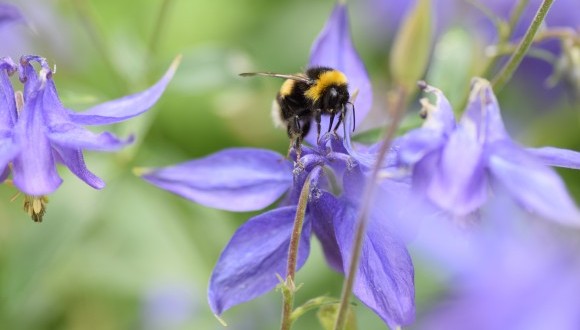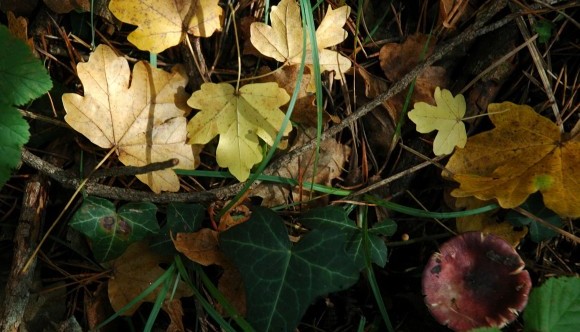Ozone affects plants, insects and microorganisms, and poses a threat to global biodiversity
According to a study co-authored by CREAF-based CSIC researcher Josep Peñuelas and published in Science Advances, increases in ozone in Earth’s atmosphere will be a danger to the biodiversity of the Mediterranean Basin, Japan and equatorial Africa by 2100.

As a highly oxidizing gas, and in elevated concentrations, ozone (O3) affects the health of living organisms. Unfortunately, its concentration in the atmosphere has increased considerably since pre-industrial times, and is expected to remain high or even rise further in numerous regions over the coming decades. A study published in the journal Science Advances earlier this month warns that the invisible gas can alter the structure and functioning of terrestrial ecosystems and is a potential threat to plant, insect and soil microbe diversity in many parts of the world. The study’s results suggest that in 2100, ozone’s adverse effects on biodiversity will be most severe in regions with the greatest wealth of endemic species, such as Atlantic islands in the Northern Hemisphere, the Mediterranean Basin, Ethiopia, equatorial Africa, the Indian coastline, the Himalayas, southern Asia, and Japan. Led by Evgenios Agathokleous from the Nanjing University of Information Science and Technology, the study involved 20 scientists from across the world, including CREAF-based CSIC researcher Josep Peñuelas.

To determine how O3 can affect plants, insects and microorganisms, the researchers reviewed all the most relevant papers and carried out experiments in which they exposed living organisms to different concentrations of ozone. Their results showed that tolerance to O3 varies from plant to plant. This entails that when an area is exposed to high concentrations of the gas, its vegetation composition changes, as some plants are weakened and displaced and some die, while others that are resistant to O3 become dominant. Additionally, the study emphasizes that, among other things, O3 alters the leaf chemistry, scent secretion, growth and vigour of plants in general. The changes in question have a knock-on effect on insects and soil microbes, which require vegetation of good nutritional quality to feed and reproduce, and depend on the scents plants emit to communicate.
The changes in question have a knock-on effect on insects and soil microbes, which require vegetation of good nutritional quality to feed and reproduce, and depend on the scents plants emit to communicate.
Ozone changes natural chemistry
All the results indicate that O3 alters leaf chemistry and the compounds or scents living organisms secrete to communicate. Firstly, that causes a reduction in the production, size and quality of leaves. Secondly, it generates confusion among insects seeking pollinator plants to feed on or leaves to lay eggs on, leading to falls in their reproduction rate and body mass. Other harmful effects of O3 include altering relationships between plants and herbivores, and preventing plants from alerting one another to pathogens, which renders them more vulnerable to attack.
The chemistry of life is as imperceptible as it is vital, as an oxidizing gas such as ozone demonstrates,” says Josep Peñuelas. “It can cause changes in the abundance and diversity of some insects and plants, alter whole communities, and it does so by means of just chemical reactions, silently and invisibly.
The study thus shows that ozone pollution changes not only the composition of plant communities but also that of insect communities, as it causes variations in the abundance of certain species and in overall diversity.

An invisible foe below ground
The study found that high concentrations of O3 can be detrimental to communities of soil-dwelling organisms too, negatively affecting nutrient cycling, plant-soil feedbacks, and the carbon and nitrogen cycles in their entirety. First of all, ozone speeds up the leaf-ageing process, which not only reduces leaf litter quality and quantity and alters the timing of litter deposition, but also weakens roots and, in general, causes deterioration in the decomposition process and decreases microbial biomass. From a molecular perspective, the study cites papers that have proven that O3 alters the expression of microbial genes involved in the carbon cycle and reduces the nitrogen-fixing capacity of legumes, for example.
“Understanding the effects of ozone pollution raises new challenges that global strategies and policies for preserving biodiversity will have to take into account” JOSEP PEÑUELAS.
Referenced article:
Agathokleous, E., Feng, Z., Oksanen, E., Sicard, P., Wang, Q., Saitanis, C. J., ... & Domingos, M. (2020). Ozone affects plant, insect, and soil microbial communities: A threat to terrestrial ecosystems and biodiversity. Science Advances, 6(33), eabc1176.







